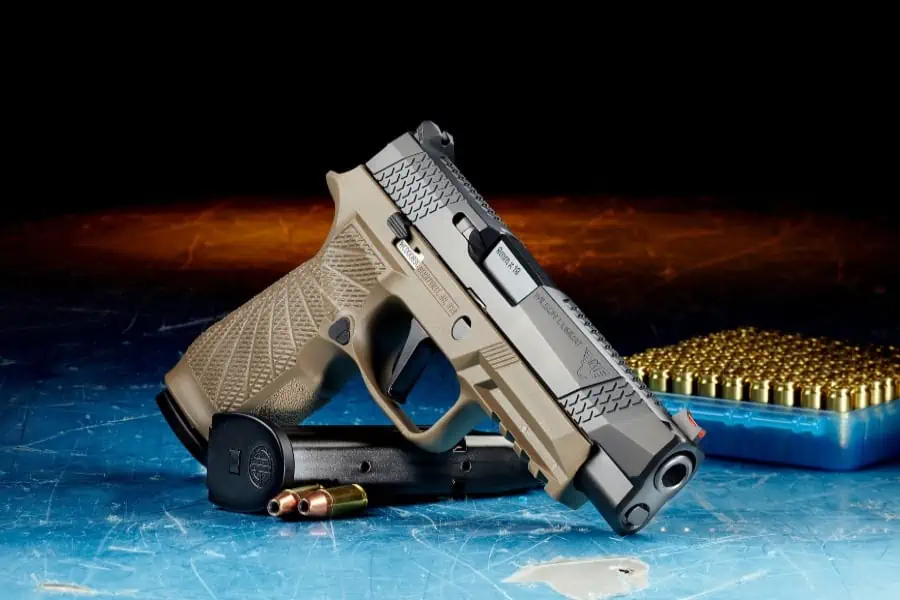
Owning firearms entails a crucial responsibility: to ensure they’re safely stored. Safe gun storage is paramount, especially in households where children or vulnerable adults live. It prevents accidental discharges that can cause harm or damage, keeps firearms out of unauthorized hands, and preserves the condition of the weapons.
If you’re committed to enhancing home safety and practicing responsible gun ownership, read on to learn the best practices that could be pivotal in preventing accidents and enhancing overall safety in your home.
1. Selecting The Appropriate Storage Method
When choosing a storage method, you need to consider various factors. The right choice will keep your firearms secure and easily accessible in case of need. Improper or careless storage can lead to home safety hazards, such as accidents involving children.
The following storage methods provide varied levels of security, each catering to different needs and circumstances:
- Gun Safes: These are the top choice for many gun owners. Their heavy-duty construction and complex locking mechanisms provide high-level security. Gun safes come in a range of sizes, accommodating collections from a single handgun to multiple long guns. For added security, consider models with biometric locks or a combination code entry.
- Lock Boxes: These are a cost-effective solution for those with fewer firearms. Though smaller and more portable than gun safes, lock boxes offer considerable security. Many have padded interiors to prevent scratches, and some models offer portability for travelers.
- Handgun Wall Mounts: If you’re seeking a balance between safety and accessibility, a handgun wall mount may be the solution. They keep firearms secure and out of the hands of children while allowing easy access in case of emergency. Remember to install them in a concealed location, out of plain sight.
- Trigger Locks: These devices prevent the gun from firing by blocking the trigger mechanism. They’re inexpensive and easy to use but don’t protect against theft or damage. They’re best used in conjunction with another storage method, such as a safe or lock box.
You can also combine these storage methods. For example, you could use a gun safe for long-term storage, and a handgun wall mount for a home-defense firearm. Keep in mind that no storage method is foolproof, so combining methods and regular safety checks will help ensure maximum security.
2. Maintenance Of Firearms And Storage Solutions
The upkeep of your firearms and storage methods isn’t a one-and-done task, but a continual process. It’s a necessary practice to keep your weapons working correctly and your storage facilities secure.
When it comes to firearms, regular maintenance is key to a firearm’s longevity and performance. Each firearm has its unique care routine, but generally, you should:
- Clean regularly: Dirt accumulation can compromise a firearm’s performance. Cleaning after each use ensures it stays in prime condition.
- Oil appropriately: Oiling reduces friction in moving parts and prevents rust. Remember, too much oil can attract dirt, causing more harm than good.
- Inspect frequently: Look for signs of wear and tear. If you notice anything concerning, consult a professional for repair or replacement.
In terms of storage solution, the condition of your firearm storage solution directly impacts its effectiveness. Regular checks and maintenance include:
- Locks and security: Make sure locking mechanisms are working correctly. Biometric sensors and combination locks may need regular recalibration.
- Structure and stability: Check for signs of physical damage. A handgun wall mount should be securely attached to the wall, and safes should be stable.
- Interior condition: Examine the interior for signs of dampness, mold, or rust. Use desiccants or dehumidifiers to control humidity inside safes.
Maintenance of your firearms and their storage solutions ensures the safety of both your family and your collection. Regular check-ups and care routines can go a long way in preserving the integrity of your firearms and their storage solutions.
3. Staying Compliant With Local Laws
Being a responsible gun owner isn’t just about secure storage and maintenance; it also means staying compliant with local laws. Regulations regarding gun ownership, storage, and use can vary widely from state to state, or even city to city. Staying compliant is essential, and here’s how you can ensure it:
- Research Your State Laws: Laws regarding firearm storage, carrying permits, and use can change depending on where you live. Make it a habit to stay updated with your state’s firearm laws. Many states have websites or resources specifically for this purpose.
- Understand Federal Laws: Beyond local laws, federal laws also apply to firearm ownership. These might include background checks, restrictions on certain types of firearms, or guidelines for interstate transportation of firearms.
- License Renewal: Keep track of the expiration dates on your permits or licenses. Renew them promptly to avoid legal complications. Some states may require regular recertification or safety training.
By staying updated with local laws, you’re not just ensuring your legal compliance, but also contributing to the overall safety of your community. It’s a crucial part of responsible gun ownership that should never be overlooked.
Conclusion
Safe and responsible firearm ownership requires more than just purchasing a gun. It entails secure storage, routine maintenance, and keen adherence to local and federal laws. You have now got the tools to keep both your firearms and family safe. But remember, knowledge is only as good as its application. So, start today, implement these practices, and take a significant step towards ensuring safety.








